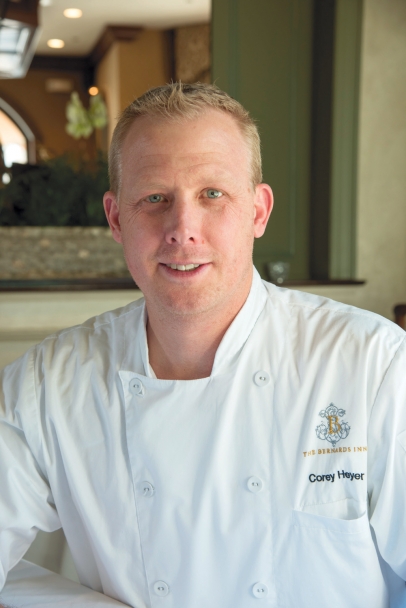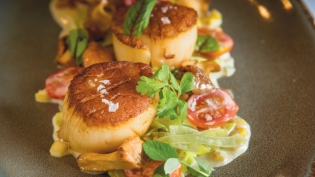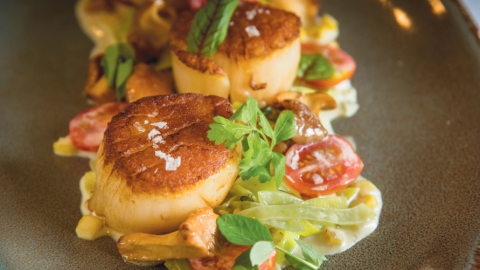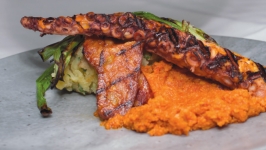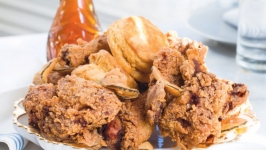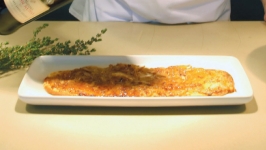Story of a Dish: Seared Barnegat Inlet Scallops
Chef: Corey Heyer
Restaurant: The Bernards Inn
Location: Bernardsville
Britain’s poet laureate, Carol Ann Duffy, once noted that “the moment of inspiration can come from memory, or language, or the imagination, or experience—anything that makes an impression forcibly enough for language to form.” For Corey Heyer, executive chef at the Bernards Inn in Bernardsville, such a moment occurred when, cutting open a canvas bag of fresh day-boat scallops, he was hit by the aroma of creamed corn.
That aromatic link assured Heyer that creamed corn and scallops would go well together. His challenge was to tweak that combination to make it more interesting and express his personal culinary perspective. “If you just serve creamed corn with scallops, you would have this perfect complement of the richness of the creamed corn and the sweetness of the cream with the sweetness of the scallop.” Heyer says. “But, although it tastes delicious, as a chef I would find it boring. It’s too much of the same thing.”
To cut through that richness, he dry-roasts the corn kernels to give them a slight char—adding complexity to the dish by bringing in a hint of smoky flavor and a touch of umami. Leeks introduce a slight sulfur burn, which Heyer says opens up the palate. They also add texture and, because they are cut on a bias, the leek slices twist into the kernels, binding the dish together.
Chanterelle mushrooms add a woodsy floral element to the dish that complements its creamy richness. That floral note is repeated in the finishing touch of lemon thyme. “When you eat seafood, you think lemon, but I didn’t want the intensity of lemon,” Heyer says. “By adding lemon thyme, you’re getting that flavor, but it’s this really floral lemon. That is, in turn, complementing the chanterelles, which ties into the corn and then the scallops as well.” If excellent scallops aren’t available, Heyer suggests serving this creamed corn with lobster, chicken or any tender white fish.
Heyer is very specific about how to cook scallops to get a caramelized crust on one side and a buttery-soft texture on the other. First rule: Don’t salt your scallops. “The minute you add salt to a raw scallop, moisture will bead up on the surface,” Heyer says. “If you put that into a hot pan, the water will turn to steam and you won’t get a good sear.” Instead, place the scallops in a hot pan with a film of oil and sear them until they form a caramelized crust on one side. (Moving the scallops as they cook ensures that the entire surface is seared, not just the edges.) Once the bottom is caramelized, salt the raw top, add butter to the pan, turn off the heat, flip the scallops over and let them sit for a moment to finish cooking. Check for doneness by lightly squeezing the sides, which should be soft. If they bounce back quickly, the scallop is overcooked. The scallops are topped with a sprinkling of finishing salt, which adds a crunch.
To Heyer, a successful dish requires proper technique combined with an understanding of how to choose ingredients that complement one another—either through similarity or contrast. “At the end of the day, cooking is a craft that takes on aspects of an art form,” Heyer says. “We’re all taught the same techniques, but if you were to give three chefs the same exact products, they would manipulate that food in completely different ways. They would put their own individual spin on it. That’s the artistic side of the craft.”
THE BERNARDS INN
27 Mine Brook Road, Bernardsville 908.766.0002


